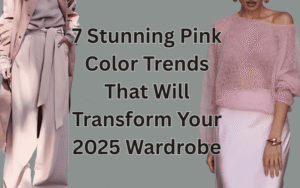Learning how to choose colors in clothing and makeup for anti-aging effect can instantly transform your appearance and make you look years younger. The answer lies in understanding your natural undertones and how colors interact with your unique features. Today, we’re diving deep into the science of professional color analysis – the same techniques expert colorists use to create that coveted youthful appearance through strategic color choices.
The Foundation: Documenting Your Natural Colors for Color Analysis
Before we begin your personal color analysis, you’ll need to create a proper reference photo. This color matching technique is crucial for accurate analysis:
Photography Requirements:
- No makeup whatsoever
- Hair pulled away from face
- Neutral clothing against a neutral background
- Natural daylight (not harsh or direct sunlight)
- No curtains or artificial lighting
- Use your phone camera, but ensure no filters are applied
We need to see your natural eye color, lip tone, skin undertone, and current hair color for accurate color matching. If your hair has been significantly altered from its natural state, you’ll also want to reference older photos showing your natural hair color for the most effective anti-aging color choices.
Understanding Eye Color: The Martin-Schultz Scale for Color Analysis
Most people think they know their eye color – blue, brown, green, or gray. But professional color analysis uses the Martin-Schultz scale, developed by anthropologists Rudolf Martin and Bruno Schultz, which identifies 20 distinct eye shades across three categories: light, dark, and mixed.
The Complete Eye Color Spectrum:
- 1A-2: True blue (the lightest eye color possible)
- 2B: Pure blue (common in infants, rare in adults)
- 3: Blue-gray (darker and more muted than blue)
- 4A-4B: Gray eyes (can be light or dark)
- 5: Blue-gray with yellow-brown flecks (creates turquoise or sea-green appearance)
- 6: Gray-green with yellow (light and muted, no blue undertones)
- 7: Pure green (rare, this is where eyes become truly saturated)
- 8: Green with pronounced brown and yellow flecks (brass-like, light and saturated)
- 9-11: Light brown and hazel (whiskey-colored, bright and saturated)
- 12-13: Brown and red-orange eyes
- 14-16: Dark brown approaching black, or red-violet tones
Pro Tip: Your exact eye color becomes your first accent color – one you can confidently use near your face in accessories, frames, or makeup for an instant anti-aging effect.
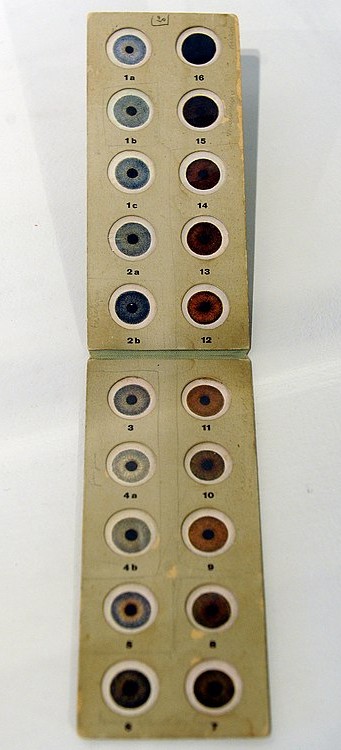
The Color Harmony Formula for Youthful Appearance
Here’s where color analysis gets fascinating: research shows that when people are asked to choose flattering colors for blondes versus brunettes with the same eye color, they consistently select lighter, less saturated versions for blondes and deeper, more saturated versions for brunettes.
This reveals something crucial about how to choose colors that create harmony with your natural features. We don’t just see individual features – we see the face as a whole. Your brain automatically “averages” your eye color with your natural hair color to create your ideal anti-aging color palette.
Your Second Key Color: Eye color + Natural hair color = Your personalized youthful color scheme

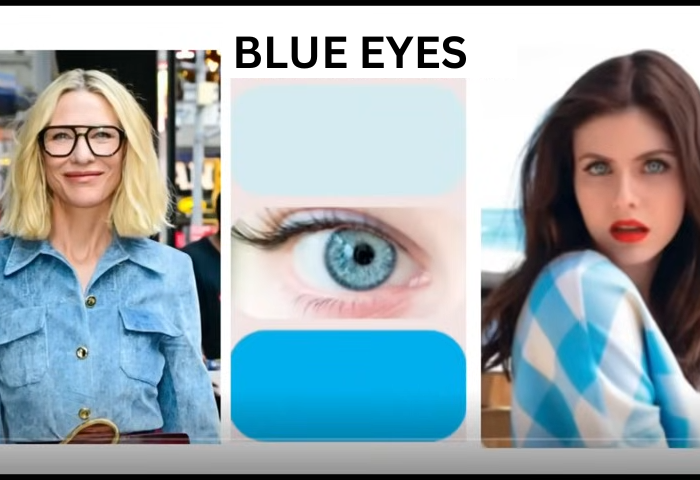

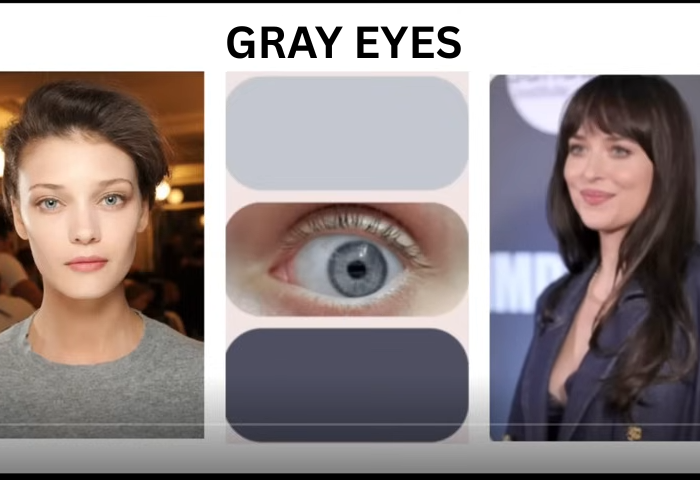
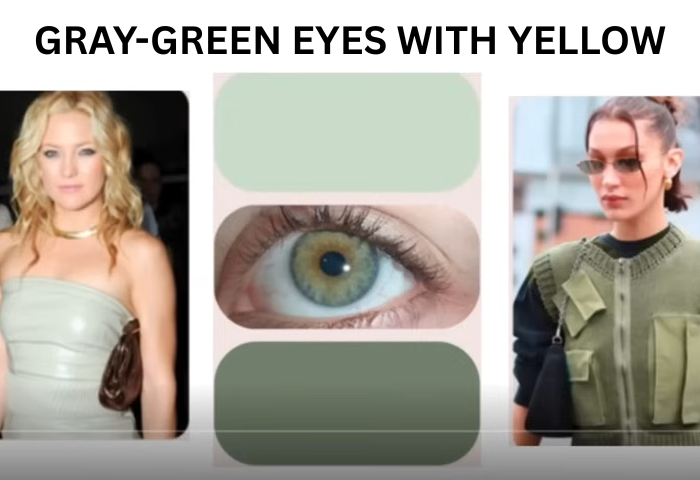
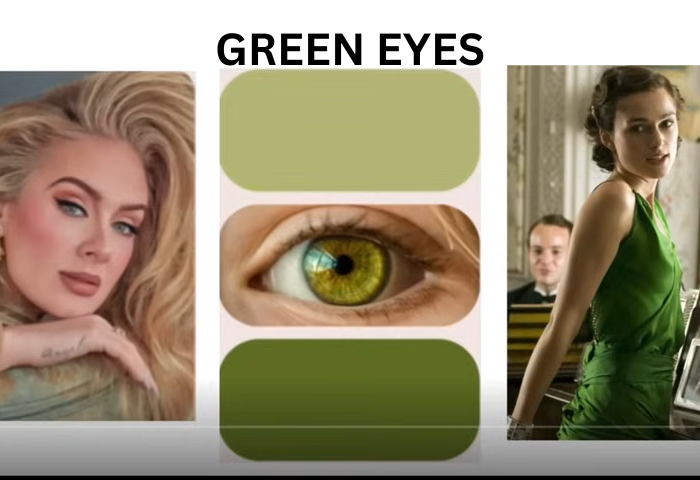
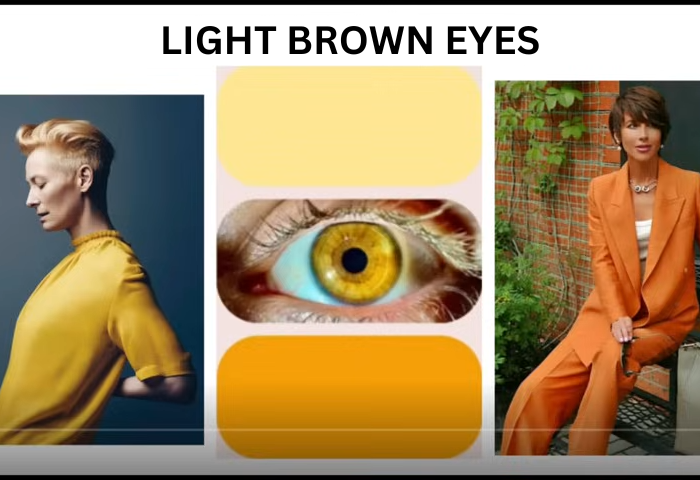


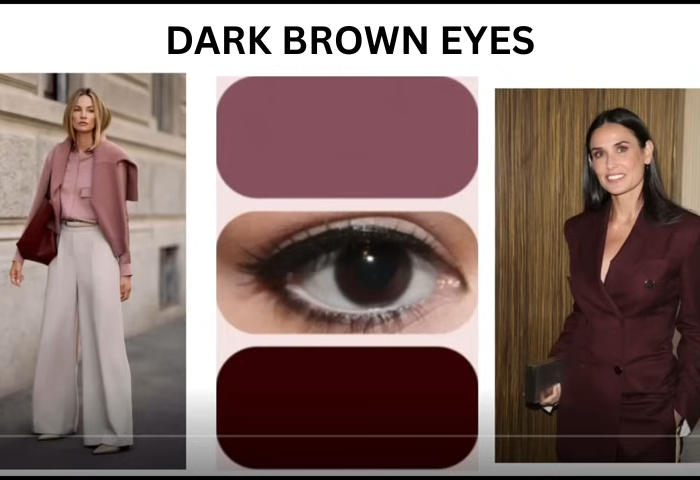
The Lipstick Effect: Science of Facial Radiance and Anti-Aging
One of the most powerful discoveries in color psychology for anti-aging relates to lip color and its effect on overall facial appearance. Research involving the same face painted with different lipstick shades revealed something remarkable about makeup colors for youthful look:
- Red lipstick makes the entire face appear brighter and more luminous
- Dark purple and burgundy shades visually darken the face
- Warm reds with yellow undertones give the face a peachy, healthy glow
- Cool pink-purple tones counteract yellow undertones in the skin
The Evolutionary Connection: Scientists believe we’re hardwired to associate red lips with youth and vitality, while darker lip colors signal maturity or fatigue – making color choice crucial for anti-aging appearance.
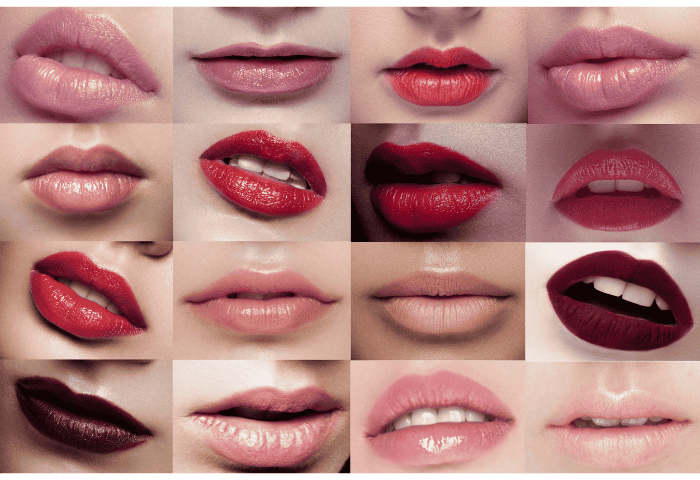
The Resonance Principle in Color Matching
Here’s the magic of professional color analysis: lipstick doesn’t just color your lips – it creates a subtle “veil” of color that reflects onto your entire face. This color matching technique means:
- If you have natural warmth in your complexion, warm-toned lipsticks will enhance it
- If you want to add missing warmth to cool-toned skin, choose warm reds
- To neutralize yellow undertones, opt for pink-purple shades
- Avoid brown-yellow tones near the face if you have freckles or age spots
Don’t Love Lipstick? This anti-aging color principle works equally well with eyeglass frames, scarves, or any accessory worn in your “portrait zone” (near your face).
Texture Matters: The Youth Factor in Color Selection
Here’s a detail most people miss when learning how to choose colors for anti-aging: matte lipsticks age you. Always choose lipsticks with satin or slight gloss finish. They reflect light and create a more youthful appearance compared to flat, matte textures that can look dull and aging.
The Skin Tone Strategy for Anti-Aging Color Analysis
Different cultures prefer different skin tones – Europeans tend to favor golden, sun-kissed skin while Asians prefer cooler, paler complexions. But here’s what’s universally flattering for anti-aging color choices:
The Contrast Principle in Color Analysis:
- Blue colors make warm, tanned skin appear even more golden
- However, overly bronzed skin can sometimes look less fresh, especially as we age
The Simultaneous Contrast Rule for Youthful Colors: Your neutral beige should be slightly “dirtier” and darker than your natural skin tone. This color matching technique makes your skin appear cleaner, brighter, and more luminous by comparison.
- Cool skin: Choose rose-gray beiges
- Warm skin: Choose yellow-gray beiges
The Age-Defying Color Rules: Professional Color Analysis Guidelines
Based on extensive research in neuroaesthetics and experimental psychology, here are the key principles for how to choose colors in clothing and makeup for maximum anti-aging effect:
1. The Youth Color Formula
Clean, warm, and light colors are perceived as youthful, while gray, brown, and dark colors appear more serious and potentially aging. This is fundamental to color analysis for youthful appearance.
2. The Fabric Factor
If you love darker colors, ensure your fabric choices have structure and lift. Avoid droopy, thin, or clingy textures that can enhance the aging effect of darker colors.
3. The Temperature Test in Color Matching
Know your natural temperature. If you’re warm-toned, gray hair (including going natural) likely won’t flatter you – gray is cool, and cool tones can deaden warm complexions.
4. The Gray Hair Reality
While gray hair is associated with aging, a well-maintained, confident woman with gray hair often becomes an aspirational figure. The key is intention and execution in your color choices.
5. The Lipstick Lift for Anti-Aging
The right lipstick shade makes your entire face appear lighter, warmer, and more radiant – creating an instant youth effect through strategic color selection.
6. The Eye Color Advantage
Your natural eye color works both as an accent and as a foundation for building your entire anti-aging color palette.
Practical Application of Color Analysis
Start by analyzing your wardrobe using these color matching techniques. You’ll likely notice patterns – either everything skews warm, cool, muted, or high-contrast. Trust your instincts; we’re naturally drawn to colors that flatter us.
The goal isn’t to follow rigid rules but to understand the science behind how to choose colors that make you look and feel your best. When you understand these professional color analysis principles, you can make confident choices that enhance your natural beauty and create that coveted anti-aging effect.
Remember: the most flattering colors are those that work in harmony with your natural coloring, creating a coherent, polished appearance that draws attention to your best features while making you look refreshed and vibrant through strategic color choices for youthful appearance.
Want to dive deeper into personalized color analysis? Consider booking a consultation with a professional colorist who can help you identify your unique anti-aging color palette and create a strategic approach to your wardrobe and makeup choices.


